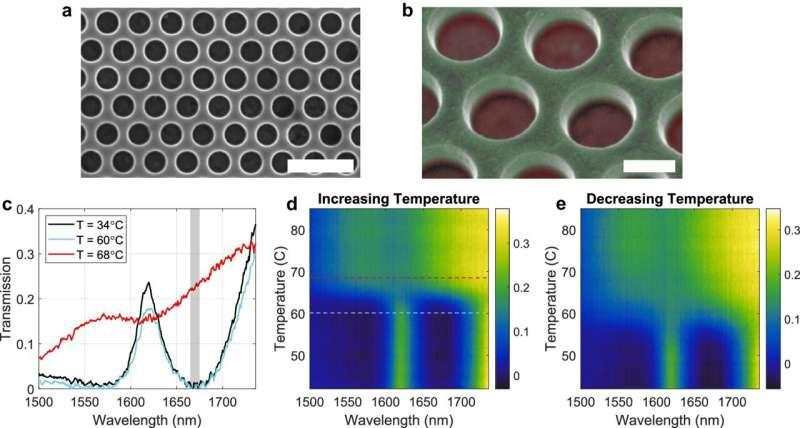
New work by researchers from the ARC Center of Excellence for Transformative Meta-Optical Systems (TMOS) and City University of New York (CUNY) published May 27 in Nature Communications realizes a new, tunable edge-detecting filter for flat-optic imaging systems that can switch between an image of an object's outline and a detailed infrared image.
The development of compact lightweight analog edge detecting image processors is of particular interest for remote sensing applications such as environmental monitoring and surveillance, due to its potential to minimize drone size, extend deployment times, and reduce operating costs. This new research is a big step toward realizing this device, with the added functionality of standard infrared imaging.
This could result in cheaper groceries as farmers are better able to precisely pinpoint which crops require irrigation, fertilization and pest control instead of taking a blanket approach to crop management.
It could also assist with efforts to protect endangered species as edge detection systems can provide valuable data about habitat types and boundaries with ecosystems. This data is used for habitat restoration and protection but is currently costly to collect.
Edge detection is an image processing tool that extracts the outline of an object, helping to distinguish objects from their backgrounds. Currently, it's a digital process that occurs after an image is captured, and requires bulky processors and traditional imaging systems. This form of digital edge detection creates lots of data that needs to be processed, stored, and transmitted.
The analog image filter developed by TMOS researchers and their partners reduces the subject to its outlines prior to capturing the image, drastically reducing the amount of data produced. It can also switch to an unfiltered, detailed infrared image when required, which is a novel development and could allow farmers to collect more information when the remote sensor identifies areas of potential pest infestations.
The filter is only nanometers thick, with a thin layer of the phase change material vanadium dioxide (VO2) embedded within a thicker silicon metasurface. When the temperature of the filter is changed, the VO2 transitions from an insulating state to a metallic one, and the processed image shifts from a filtered outline to an unfiltered infrared image.
Meta-optics (also known as flat optics and nanophotonics) is a new field that is miniaturizing optical technology by replacing traditional lenses with metasurfaces. The filter can be combined with a metalens to greatly reduce the size of imaging systems, making it ideal for use on drones, satellites and other applications that require low size, weight and power requirements.
Lead author Michele Cotrufo says, "While a few recent demonstrations have achieved analog edge detection using metasurfaces, most of the devices demonstrated so far are static. Their functionality is fixed in time and cannot be dynamically altered or controlled.
"Yet, the ability to dynamically reconfigure processing operations is key for metasurfaces to be able to compete with digital image processing systems. This is what we have developed."
Importantly, while offering the highly sought-after reconfigurability, the metasurface matched the performance of its static counterparts in terms of the numerical aperture, efficiency, isotropy and polarization independence.
TMOS Partner Investigator Andrea Alu says, "We used a VO2 layer and local heating element as a proof of concept. Now, there's the potential to expand the research to include non-volatile phase change materials, which don't require heating, or to integrate it with an external pump laser for optically-induced heating. The latter scenario may open interesting avenues for all-optically reconfigurable nonlinear analog computation."
Click here to see more...